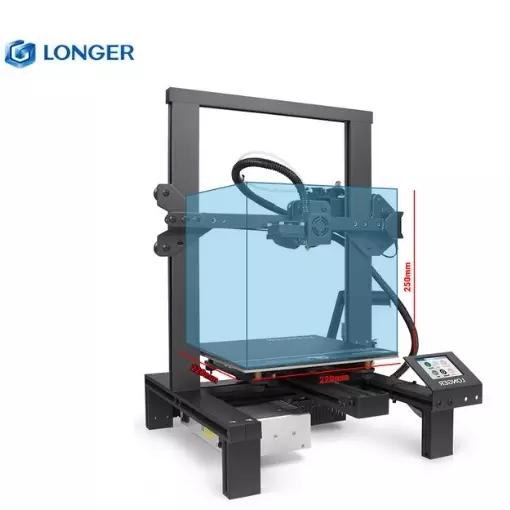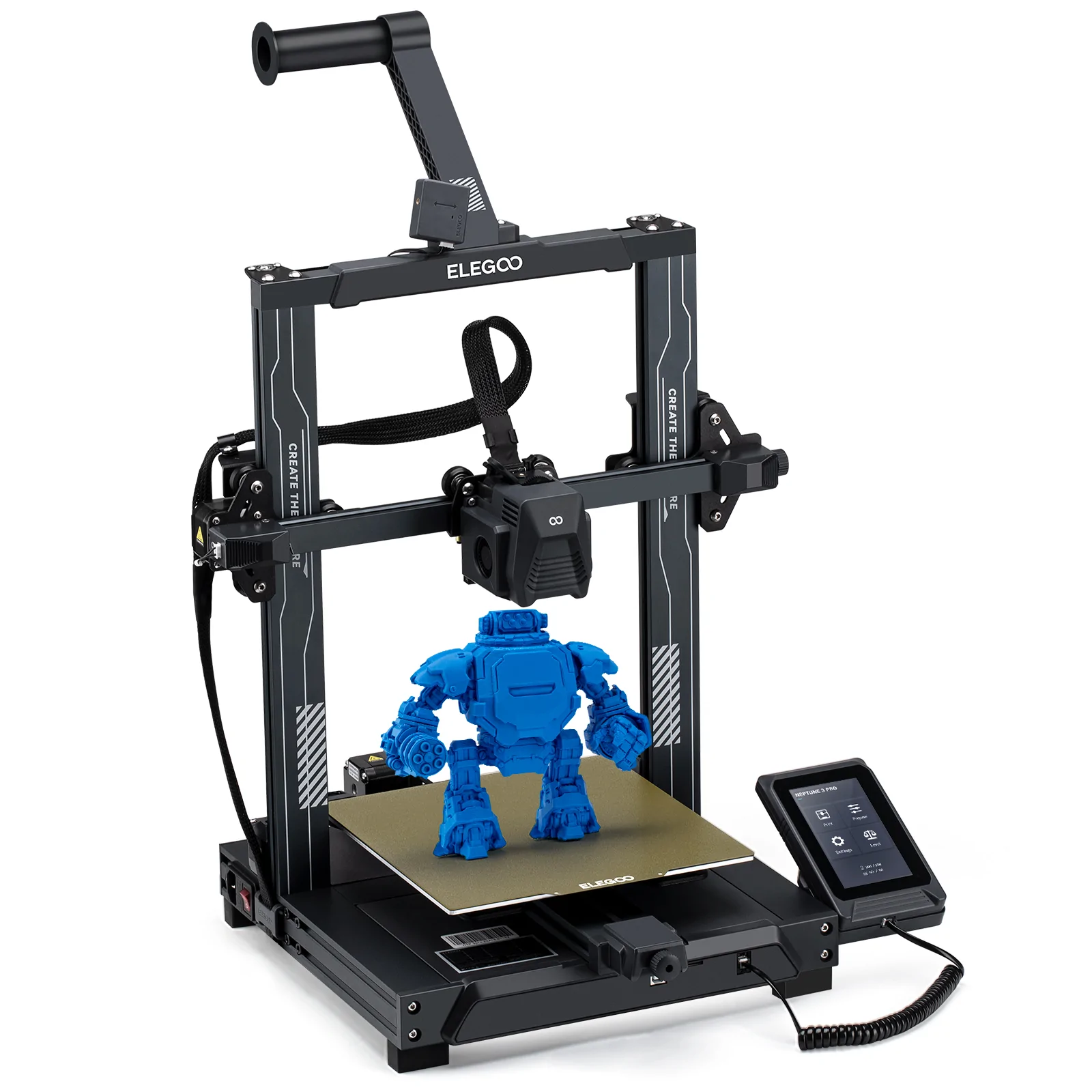Compare LK4 X vs Neptune 3 PRO
Comparison between the best 3D printers
Choose the best 3D printer at the best price. The cheapest 3D printers are here.
Buy a 3D printer here with 3D Fila.
 |
 |
|
| Model | LK4 X |
Neptune 3 PRO |
| Printing Material | Filament | Filament |
| Buy Filament for Longer 3D LK4 X | Buy Filament forElegoo Neptune 3 PRO | |
| Estimated price | $299,00 | $230,00 |
| Manufacturer | Longer 3D | Elegoo |
| Release Year | 2022 | 2022 |
| Print Volume [mm] | 220x220x250 | 225x225x280 |
| Printer Size [mm] | 465x485x615 | 445x515x475 |
| Weight [kg] | 9,8 | 8,1 |
| Power Loss Recovery | YES | YES |
| Enclosed printer | NO | NO |
| Bed Leveling | Automatic | Automatic |
| Filament End Sensor | YES | YES |
| Bed type | Heated | Heated |
| Power supply system | Bowden | Direct Drive |
| Standard nozzle | 0,4 | 0,4 |
| Maximum Nozzle Temperature [°C] | 250 | 260 |
| Maximum Bed Temperature [°C] | 100 | 100 |
| Maximum printing speed [mm/s] | 120 | 80 |
| Filament holder | YES | YES |
| Camera for supervision | NO | NO |
| Recommended filaments | PLA, TPU, ABS, PETG | PLA, PETG, Tritan, Flex, ABS |
| Recommended slicers | Cura, Simplify, Slic3r | Cura, Simplify, Slic3r, IdeaMaker e outros |
| Maximum Resolution [mm] | 0,1 | 0,1 |
| Processor | 8 bits | |
| Display | Touchscreen TFT 4,3'' | Display touchscreen 4,3'' |
| Power Supply | 12V / 320W | 250 |
| Connectivity | SD / USB | |
| Operating systems | Windows, Mac, Linux | Windows, Mac, Linux |
| Date of registration in the system | 2021-04-15 | 2023-03-02 |
| Release date | 2022 | 2022 |
| Extra features | Longer LK4 X offers intelligent 16-point auto-leveling and dual direct-gear extruders for precise filament control, compatible with multiple materials. It features an ultra-quiet 32-bit motherboard and open-source firmware, promoting creative freedom. Its PEI film platform ensures strong adhesion and easy model removal. Includes resume printing functions and filament out-of-stock protection. Assembly is simple, with 95% pre-assembled. It has a 4.3-inch touch screen, dual fan kit, low power consumption, manual belt tensioners and improved Teflon tube. | The Elegoo Neptune 3 Pro printer stands out for its easy assembly and automatic bed leveling, ideal for different levels of users. Equipped with a direct-drive extruder and dual gears, it offers excellent adhesion to slippery materials such as TPU. It incorporates dual screws on the Z-axis, ensuring stable prints, and features an integrated task light for improved visibility. With a PEI-coated build plate and a detachable touchscreen, it combines functionality and convenience. The printer also features an efficient cooling system, filament sensor and a simplified user interface. |
| Support for multiple colors and materials (AMS and CFS) | NO | NO |
Notes * |
||
| Cost-benefit | 7 / 10 | 7 / 10 |
| Hardware | 2.8 / 10 | 2.8 / 10 |
| Tela | . | . |
| Print volume | 3 / 10 | 3 / 10 |
| Performance | 1 / 10 | 0 / 10 |
Conclusion |
| In comparing the Longer LK4 X and the Elegoo Neptune 3 Pro, both printers offer a solid range of features catering to varying user needs, yet they differ in certain aspects that could influence a purchasing decision. From a pricing perspective, the Neptune 3 Pro is the more budget-friendly option, making it suitable for those looking for an affordable entry into 3D printing without sacrificing essential features. Despite the lower price point, it provides similar print capabilities, including automatic bed leveling and compatibility with multiple filament types. In terms of print volume, the Neptune 3 Pro slightly edges out the LK4 X, allowing for larger print projects. Additionally, its direct-drive extruder is particularly beneficial for printing flexible materials, lending it an advantage in versatility. Both printers feature essential conveniences, such as power loss recovery and filament end sensors, which are important for seamless printing experiences. However, the LK4 X boasts a higher maximum printing speed, which might appeal to users who prioritize efficiency. Overall, both printers present a strong value proposition, with the Neptune 3 Pro being more cost-effective while still delivering reliable performance and ease of use. The LK4 X, while slightly more expensive, offers unique advantages in speed and dual extruder capabilities. Ultimately, the decision should hinge on specific user needs, budget constraints, and the types of projects intended for the 3D printer. |

